English cottage gardens present one of the prettiest and most welcoming outdoor styles. The ideal plants for this style have a natural integration that makes them appear to have coexisted for many years.
So, proper planning remains essential in maintaining English garden plants even when they mimic the natural appearance of an untamed environment.
The correct blend of plants will help you develop a stunning garden that will remain appealing forever. The following list of plants can be bought as they can successfully replicate the iconic English garden design.
Table of Contents
10 Must-Have English Garden Plants for a Timeless Look
1. Peachleaf Bellflower
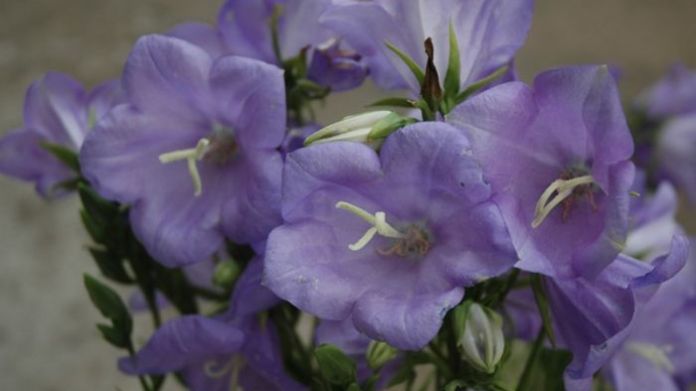 The plant displays tall stems with bell-shaped blue, purple, and white flowers that appear throughout the summer.
The plant displays tall stems with bell-shaped blue, purple, and white flowers that appear throughout the summer.
The summer months allow this plant to bloom, which can enhance your gardens with its light design. Despite being a bellflower species, it does not grow excessively but occasionally produces self-seeded plants in new areas.
- Light: Sunny or partly shaded sunlight
- USDA Hardiness Zones: 3-8
- Mature Size: 6 inches-2.5 ft
- Needed Soil: Sandy, loamy and neutral, alkaline
2. Delphinium
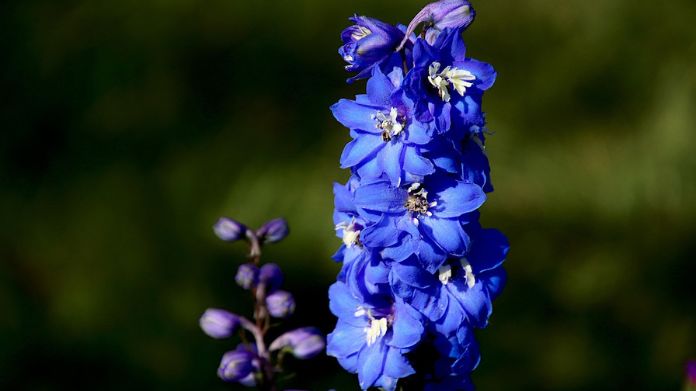 The Delphinium plant is among the top English garden plants known for its vertical clusters of blossoms. It produces blue, purple, pink, and white flowers.
The Delphinium plant is among the top English garden plants known for its vertical clusters of blossoms. It produces blue, purple, pink, and white flowers.
Also, as they can grow tall, they create an excellent vertical impact. However, this plant shows weakness against severe climatic conditions but flourishes best in mild temperatures.
- Light: Mild sunlight
- USDA Hardiness Zones: 3-9
- Mature Size: 6 inches-7 ft
- Needed Soil: Well-draining, moist, and neutral pH loam
3. Cottage Pinks
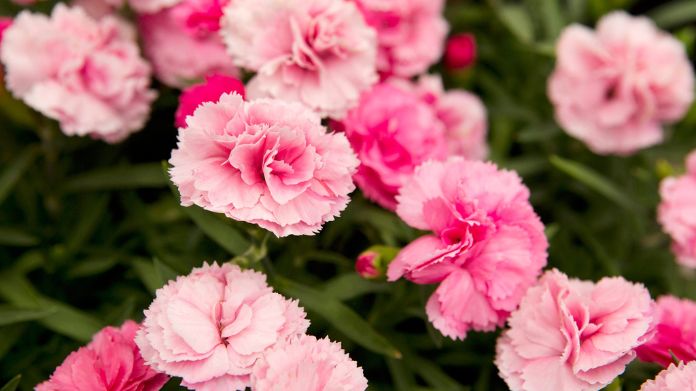 The small flowers on these short plants possess sweet and spicy scents alongside fringed petals. As they are short flowers, you can keep them toward the garden front.
The small flowers on these short plants possess sweet and spicy scents alongside fringed petals. As they are short flowers, you can keep them toward the garden front.
You can enjoy their unique scents more if you place them in an area where you will brush up against those plants.
Every year, new varieties of these plants come up that are drought-resistant, and they are not always pink.
- Light: Intense sunlight
- USDA Hardiness Zones: 3-9
- Mature Size: 6-24 inches wide and 6-36 inches tall
- Needed Soil: Well-drained and moist; neutral to acidic
4. Hardy Geranium
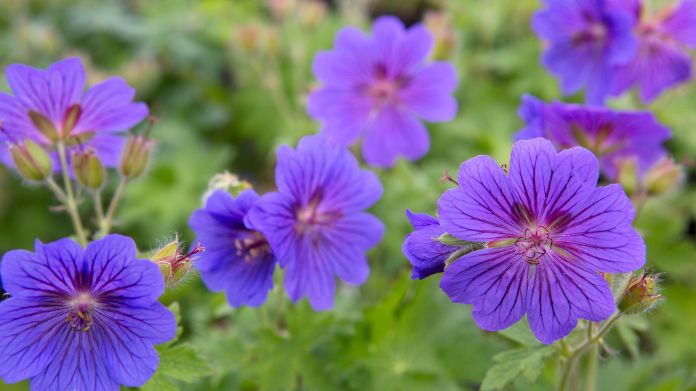 The plants, which also go by the name cranesbill geraniums, produce blooms that appear in various pink, purple, and blue colors from a density of bush-shaped leaves.
The plants, which also go by the name cranesbill geraniums, produce blooms that appear in various pink, purple, and blue colors from a density of bush-shaped leaves.
These plants differ from ordinary potted geraniums. Hardy geraniums continuously give off flowers for multiple weeks, while their proper maintenance allows summertime blooming.
However, a simple cutting of the plant will generate new leaf growth together with flowers after it undergoes pruning.
- Light: Complete or shaded sunlight
- USDA Hardiness Zones: 3-9
- Mature Size: 1-3 inches wide and 6-36 inches tall
- Needed Soil: Well-drained and medium moist
5. Japanese Anemone
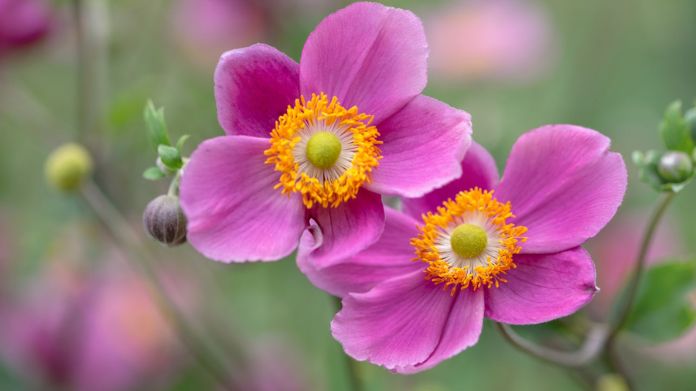 Late-blooming English garden plants like Japanese Anemone can make your garden look elegant. However, their flowers have narrow shapes, with long, thin stalks carrying delicate cup-shaped petals.
Late-blooming English garden plants like Japanese Anemone can make your garden look elegant. However, their flowers have narrow shapes, with long, thin stalks carrying delicate cup-shaped petals.
The flowers mostly appear in three different colors: pink, white, and purple. Support systems might be necessary due to their grown height.
These plants reproduce over time, which allows garden owners to use them to fill gaps in their garden plant arrangements.
- Light: Maximum or light sunlight
- USDA Hardiness Zones: 4-8
- Mature Size: 36-48 inches
- Needed Soil: Well-drained, moist, and acidic to neutral
6. Hollyhock
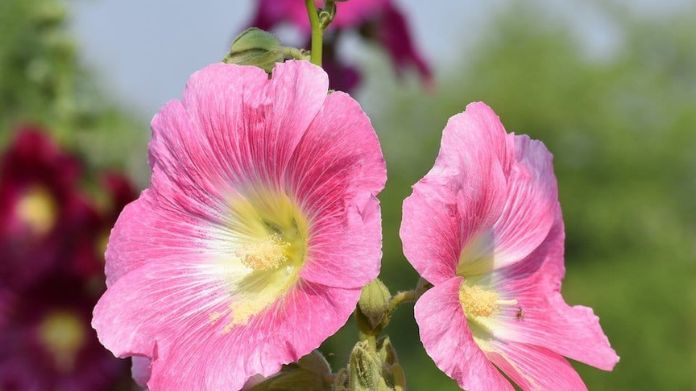 Hollyhock remains a well-known cottage garden plant because its tall stalks can grow up to 8 feet high. The plant produces various floral colors, from pink to red, yellow, and white.
Hollyhock remains a well-known cottage garden plant because its tall stalks can grow up to 8 feet high. The plant produces various floral colors, from pink to red, yellow, and white.
People commonly find hollyhocks planted beside fences and walls because they form a beautiful outlook.
Every two years, these plants flower before ending their lifespan, although they spread seeds naturally, which allows self-regeneration.
- Light: Partial to complete shade
- USDA Hardiness Zones: 2-10
- Mature Size: 1-2 ft wide and 8 ft tall
- Needed Soil: Well-drained and moist
7. Lavender
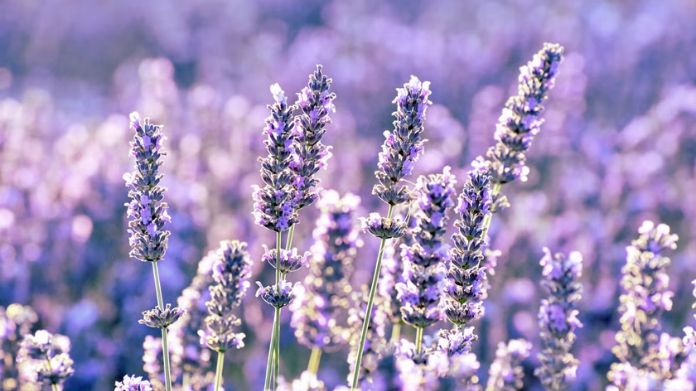 Lavender is one of the favored English garden plants because of its scented fragrance and purple flower arrangement.
Lavender is one of the favored English garden plants because of its scented fragrance and purple flower arrangement.
This versatile plant grows easily, and many people plant it to decorate their pathway edges and garden borders.
The lavender flowers draw flying insects like bees and butterflies through their smell and protect the plant from harmful pests.
- Light: Full sunlight
- USDA Hardiness Zones: 5-9
- Mature Size: 2-4 ft wide and 2-3 ft tall
- Needed Soil: Well-draining, dry, alkaline
8. Lady’s Mantle
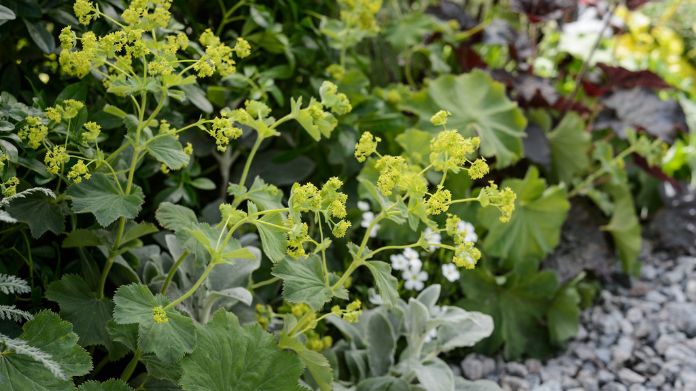 The plant became popular because its smooth oval leaves sometimes hold raindrops that shine with sunlight.
The plant became popular because its smooth oval leaves sometimes hold raindrops that shine with sunlight.
Above early summer, the plant releases dainty yellow-green blooms, which give a delicate aspect to the garden environment.
The plant survives in full sun or shaded conditions and requires little care. Lady’s Mantle is commonly deployed as a covering plant to hide empty spaces surrounding other taller plants.
- Light: Complete to shaded sunlight
- USDA Hardiness Zones: 3-8
- Mature Size: 12-24 inches
- Needed Soil: Well-drained, medium moist, and acidic to neutral
9. Peony
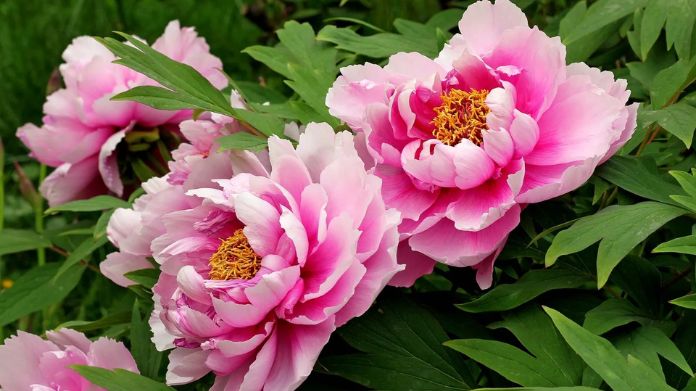 Gardeners highly appreciate peonies, as these plants produce large, fragrant blooms that look very pretty. The plant shows its color palette through primarily pink and yellow.
Gardeners highly appreciate peonies, as these plants produce large, fragrant blooms that look very pretty. The plant shows its color palette through primarily pink and yellow.
These flowers’ short early summer bloom period becomes worthwhile since their natural beauty is exceptional.
The deep green foliage of peonies retains visual appeal after their flowering period while transitioning to red during autumn.
- Light: Full sunlight
- USDA Hardiness Zones: 3-9
- Mature Size: 3 ft
- Needed Soil: Slightly acidic to neutral and well-drained
10. Primrose
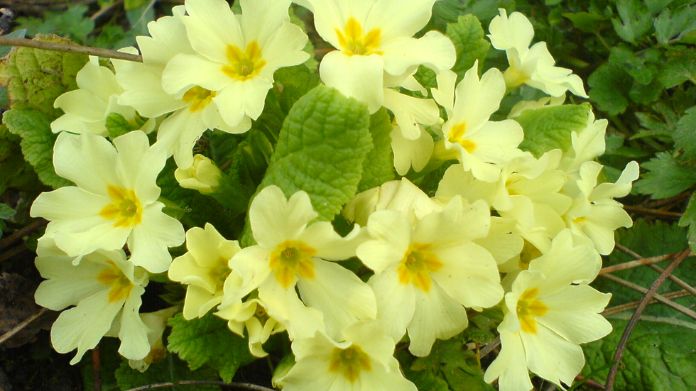 The arrival of spring brings primroses, which emerge early as the first joyful flowers to decorate gardens.
The arrival of spring brings primroses, which emerge early as the first joyful flowers to decorate gardens.
Trees and water elements provide the perfect habitat for these plants because they need cool and shaded environments.
Variations of yellow appear as flower colors for this plant. The Japanese primrose stands tall among plants, whereas other primroses keep their growth close to the ground.
- Light: Partial sunlight or shade
- USDA Hardiness Zones: 3-8
- Mature Size: 8-20 inches wide and 6-20 inches tall
- Needed Soil: Moist, acidic, and well-drained
How to Pick the Most Suitable English Garden Plants for You?
When planning to add English garden plants, you should select plants that match your area and climatic conditions.
The natural appearance of the traditional English garden depends on your selection of proper plants, which simultaneously produce a healthy and stunning garden.
So, go through the following points as they explain decision-making strategies.
- Consider Your Climate: Every plant species has different preferences regarding the climate in which it grows most successfully. Lavender flowers prefer dry warmth, while primroses require coppery light environments. So, review potential plants by matching them with your local climate and soil composition before making plant choices.
- Go for the Right-sized Plants that are Perfect for Your Area: Start by selecting plants that correspond to the size of your gardening area. Your plant selection depends on space availability. For example, hollyhocks and delphiniums need large areas, but hardy geraniums and Ladies’ Mantle fit small gardens and borders.
- Think About Blooming Seasons: A year-round attractive garden emerges when you select different blooming plants that will flower throughout the seasons. You may pick peonies and primroses as they bloom in spring. Along with it, you can add Japanese anemones and hollyhocks as they bloom during a later period.
- Pick Low-Maintenance or High-Maintenance Plants: People who like effortless gardening should choose plants that are both hardy and low-maintenance. The care routine for lavender and lady’s mantle plants remains minimal, yet delphinium plants demand additional support and regular watering.
Closing
An English garden creates the perfect combination of natural beauty and gentle colors. However, you can pick any of the mentioned English garden plants of your choice.
The selection of plants depends on your climate suitability, the garden dimensions, and your available gardening space.

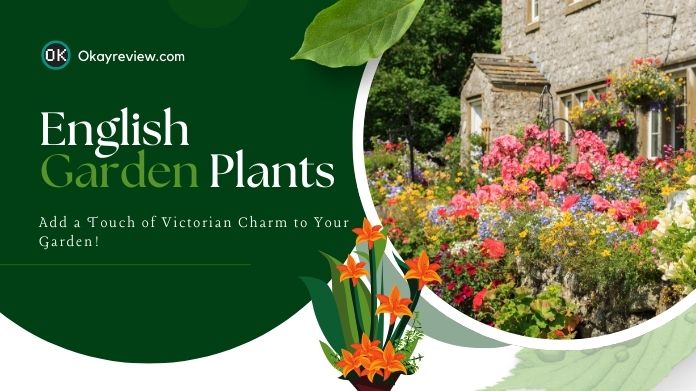
Wonderful article! I love how you’ve highlighted classic English garden plants and their unique characteristics. The mix of perennials, shrubs, and climbers creates such a timeless, romantic feel. A section on low-maintenance English garden plants would be a great addition.